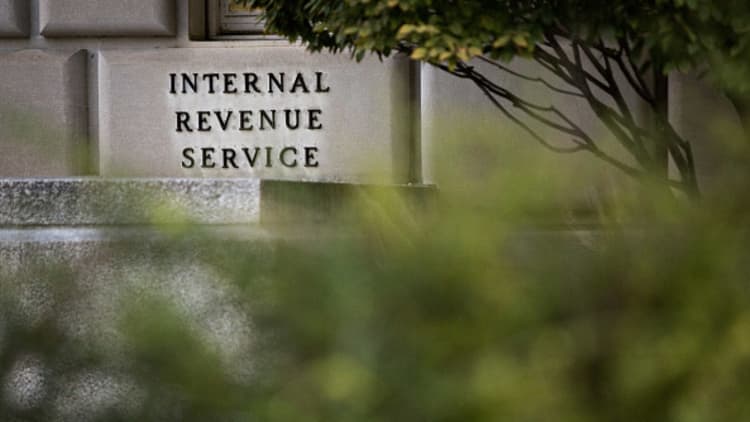Most taxpayers who filed their return in April can breathe easy for a year before facing another Internal Revenue Service deadline. The self-employed aren't so fortunate.
If you have income from a side gig or from full-time freelancing and contract work — i.e., no company is withholding taxes from your paycheck — it's time to give Uncle Sam a piece of your earnings.
Estimated taxes for the second quarter of 2018 are due Friday, marking the second of four payment deadlines (see chart below).
| Payment period | Due date |
|---|---|
| January 1 to March 31 | April 17, 2018 |
| April 1 to May 31 | June 15, 2018 |
| June 1 to August 31 | September 17, 2018 |
| September 1 to December 31 | January 15, 2019 |
The U.S. tax system is a pay-as-you-earn deal. Workers who don't have an employer withholding taxes from their paychecks are expected to pony up to the IRS as they make money throughout the year. Otherwise, look out.
"If you owe more than $1,000 at the end of the year and you don't qualify for one of the [exceptions], you will be penalized," said certified financial planner and certified public accountant DeDe Jones, managing director of Innovative Financial in Lakewood, Colorado.
The IRS can assess underpayment penalties above that threshold unless:
1) You earn below $150,000 and paid 90 percent of your current-year tax burden or 100 percent of the previous year's tax bill; or
2) You earn more than $150,000 and paid at least 90 percent of your current-year tax burden or 110 percent of what you paid the previous year.
More from Personal Finance:
Here's how the Fed rate hike will affect your finances
This is why most Americans tap their retirement savings early
Four tips to help you fight back against high medical bills
While the above generally holds true for all workers, those with taxes withheld by an employer typically are less likely to underpay by enough to generate a penalty.
Also, although the new tax law that took effect Jan. 1 lowered rates individual tax rates and created a 20 percent deduction for qualifying earnings for solo workers (and other business entities that have so-called pass-through income), it doesn't take much to owe the IRS.
If you have net income — your business income less expenses — of at least $400, that amount is subject to the 15.3 percent self-employment tax.
That levy comprises a 12.4 percent Social Security tax and 2.9 percent Medicare tax and applies to income up to $128,400 in 2018 (up from $127,200 in 2017).

Income above that threshold is subject only to the 2.9 percent Medicare tax, and earnings above $200,000 ($250,000 for married couples filing jointly) also get hit with an additional 0.9 percent Medicare tax.
While workers at companies also are subject to these taxes, their employer pays half. A self-employed person — as both the employer and employee — pays both shares. However, half of that tax generally can be deducted, which lowers your adjusted gross income.
To make sure you can pay your estimated taxes when the four yearly deadlines roll around, it's wise to regularly set aside a portion of your income for that purpose.
"You should be putting away 30 cents of every dollar that comes through the door in preparation of taxes," Jones said. "If you never the see the money, you can trick yourself into thinking you don't have it."


